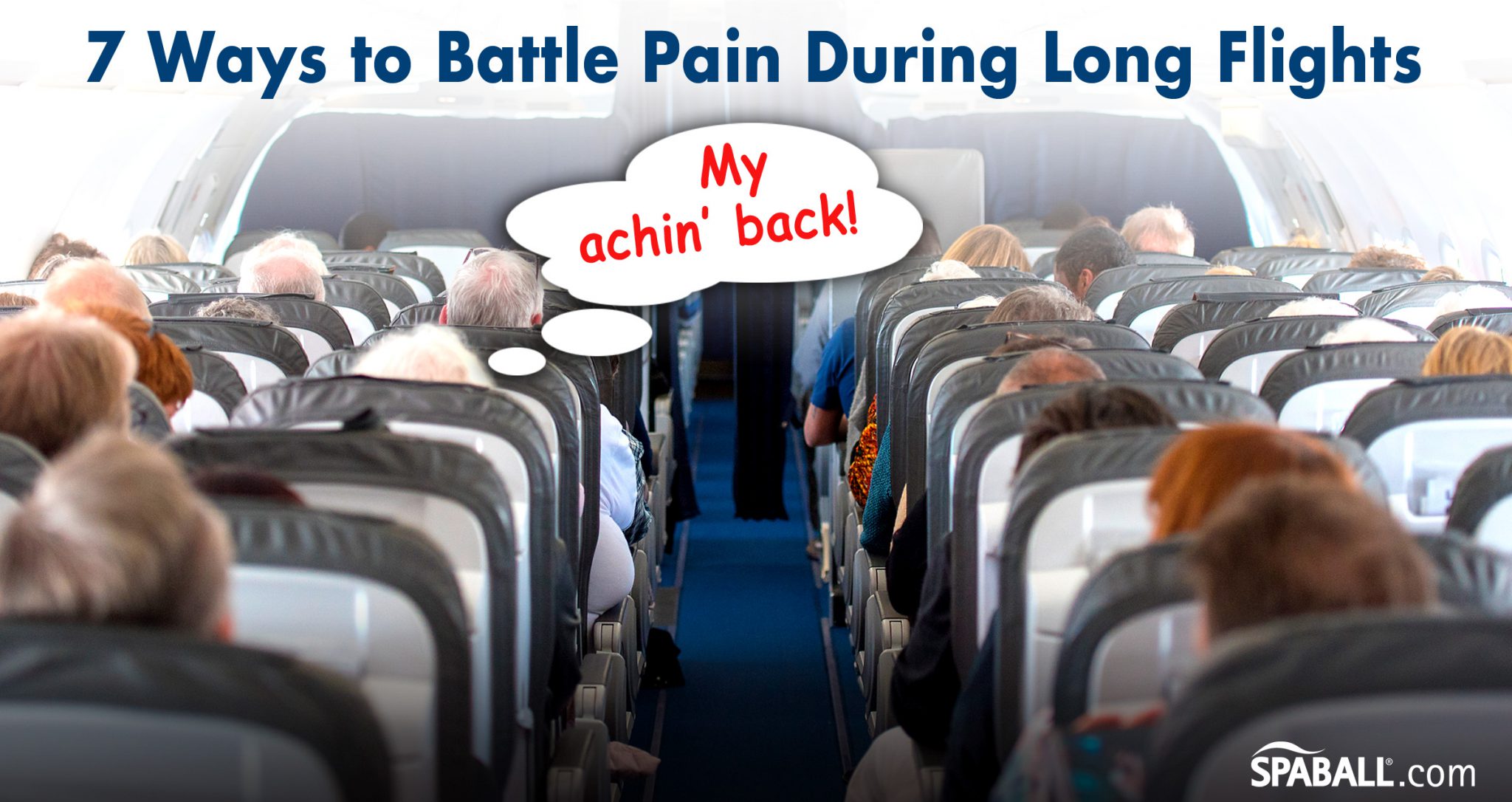With the advent of economy airlines, flying has become increasingly uncomfortable and it’s necessary to learn to battle pain during long flights. From the rock-hard seat cushions, to the lack of legroom and lumbar support , and the restrictions for moving around — it’s a wonder people aren’t rushing to the nearest massage therapist the second they step off the gangway. When you have to fly more than four hours to your destination and you don’t have the funds to fly in first class, you need to get creative in finding ways to take care of your body, especially your back.
1. Lumbar Back
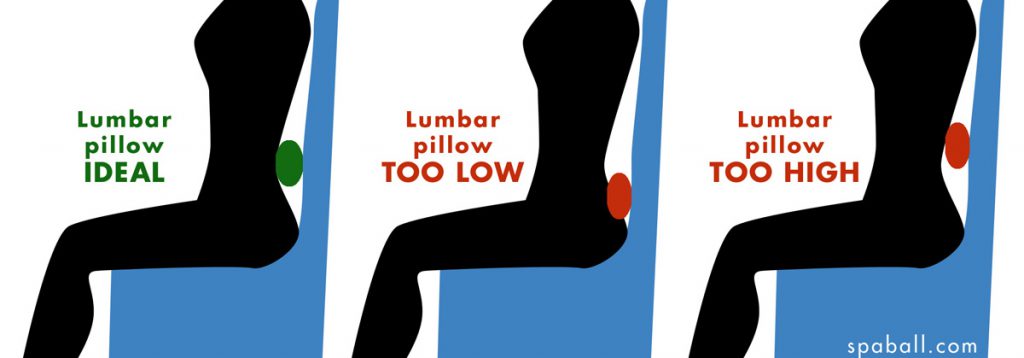 First, place a small (airline-size) pillow in the lumbar area of your seat, which corresponds to the curve in your lower back, just above the buttocks. You can also try a rolled up blanket or a jacket. Not too much though — make sure it feels comfortable. This will help maintain the normal lumbar curvature of the spine. Try not to slouch and adjust your seat so it tilts back a bit to take the load off your back.
First, place a small (airline-size) pillow in the lumbar area of your seat, which corresponds to the curve in your lower back, just above the buttocks. You can also try a rolled up blanket or a jacket. Not too much though — make sure it feels comfortable. This will help maintain the normal lumbar curvature of the spine. Try not to slouch and adjust your seat so it tilts back a bit to take the load off your back.
2. Legs
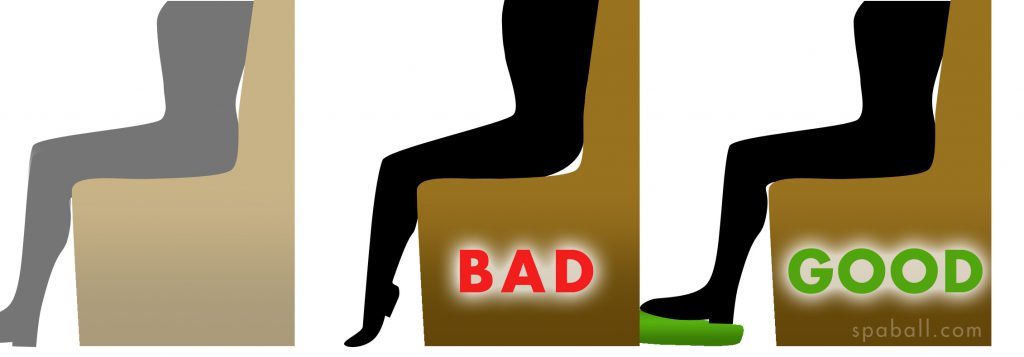 Next, check to see if your feet touch the floor when you sit straight in your seat. If they don’t, place a carry-on bag under your feet so your knees are bent 90 degrees and your back is comfortably aligned. Dangling legs cause hamstring pain and lower back pain because this position stretches the tendons and nerves at the back of the thighs. Pressure on the back of the thighs also may impede circulation.
Next, check to see if your feet touch the floor when you sit straight in your seat. If they don’t, place a carry-on bag under your feet so your knees are bent 90 degrees and your back is comfortably aligned. Dangling legs cause hamstring pain and lower back pain because this position stretches the tendons and nerves at the back of the thighs. Pressure on the back of the thighs also may impede circulation.
3. Buttocks
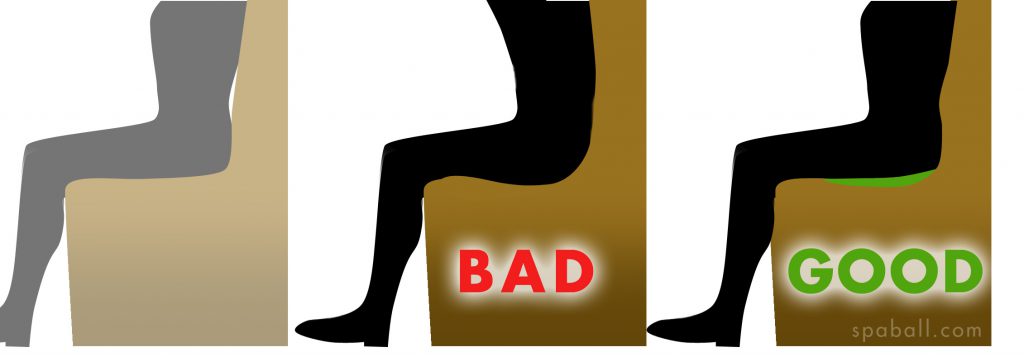 If you feel like your seat cushion is sagging or bottomed-out (which means the spring-like action of the cushion is worn out), then you’ll need to sit on a folded blanket or a jacket. This helps protect your sitz-bones—the area of the pelvis that bears your weight while sitting.
If you feel like your seat cushion is sagging or bottomed-out (which means the spring-like action of the cushion is worn out), then you’ll need to sit on a folded blanket or a jacket. This helps protect your sitz-bones—the area of the pelvis that bears your weight while sitting.
4. Neck
When you’re trying to catch a few Zs, you’ll need to support your head and neck. There are quite a few variations on the theme of the U-shaped boppy pillow for the neck. They come in different sizes, fabrics and densities. The best one will fit under the jawline without choking you and will be firm enough to support your nodding head. Jordan Bishop reviewed 14 travel pillows for Forbes and preferred the REI Self-Inflating Travel Neck Pillow.
Whichever pillow you choose, try to find one that doesn’t cause tension in the neck and shoulder when you lean your head against the headrest.
5. Upper Back
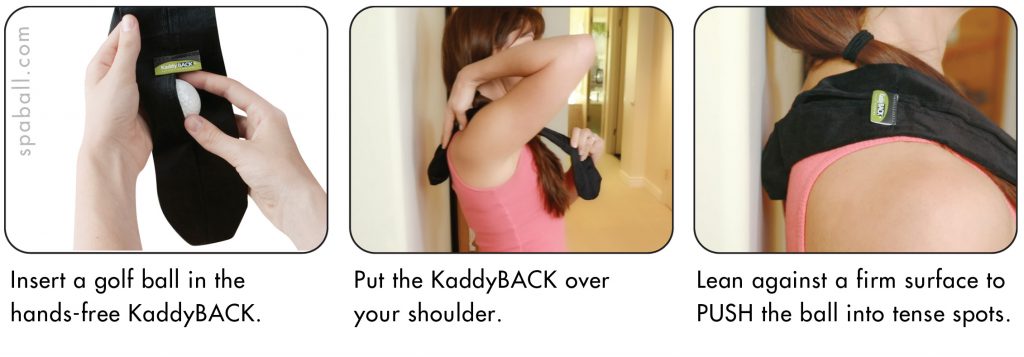 But what if you’ve taken all these precautions and you’re still sitting in pain? You can massage the tight muscles in your upper back all by yourself with the portable KaddyBACK and golf ball.
But what if you’ve taken all these precautions and you’re still sitting in pain? You can massage the tight muscles in your upper back all by yourself with the portable KaddyBACK and golf ball.
The KaddyBACK is designed to hold a golf ball in place over the area that needs attention. Drape the KaddyBACK over your shoulder and position the golf ball on the tight muscles. Apply firm pressure by leaning into the back of your seat hands-free. (You can also use a sock but the KaddyBACK can be used hands-free to allow you to multi-task and is much more attractive.) By the time you arrive at your destination you may be able to get some relief.
6. Body Aches
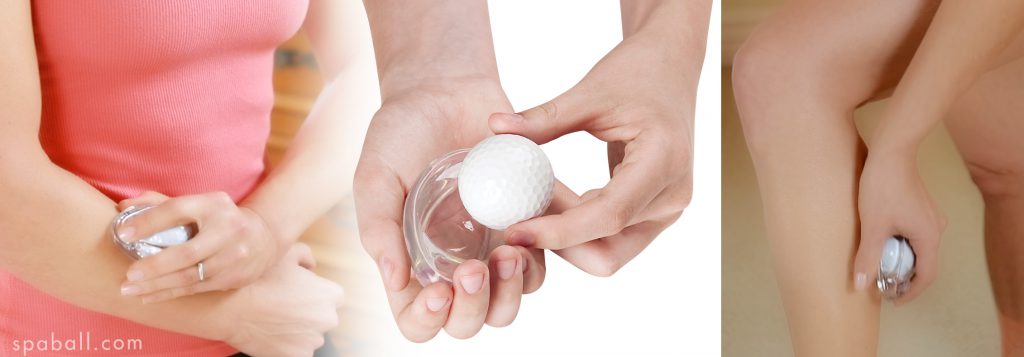 If you’re experiencing tightness in your legs (thighs or calves) or on top of your shoulders (in the trapezius muscle area), or your pecs, the SPABALL Massager is great for rolling a golf ball over the target areas.
If you’re experiencing tightness in your legs (thighs or calves) or on top of your shoulders (in the trapezius muscle area), or your pecs, the SPABALL Massager is great for rolling a golf ball over the target areas. 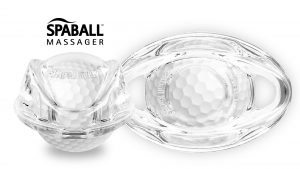 Both the SPABALL Massager and the KaddyBACK are portable and don’t take up valuable packing space. You could fit them into your coat pocket along with a golf ball and be assured that pain relief is just a massage away. The SPABALL Massager is the same tool used by professional massage therapists world-wide. VIDEO OF SPABALL MASSAGE IN ACTION
Both the SPABALL Massager and the KaddyBACK are portable and don’t take up valuable packing space. You could fit them into your coat pocket along with a golf ball and be assured that pain relief is just a massage away. The SPABALL Massager is the same tool used by professional massage therapists world-wide. VIDEO OF SPABALL MASSAGE IN ACTION
7. Feet
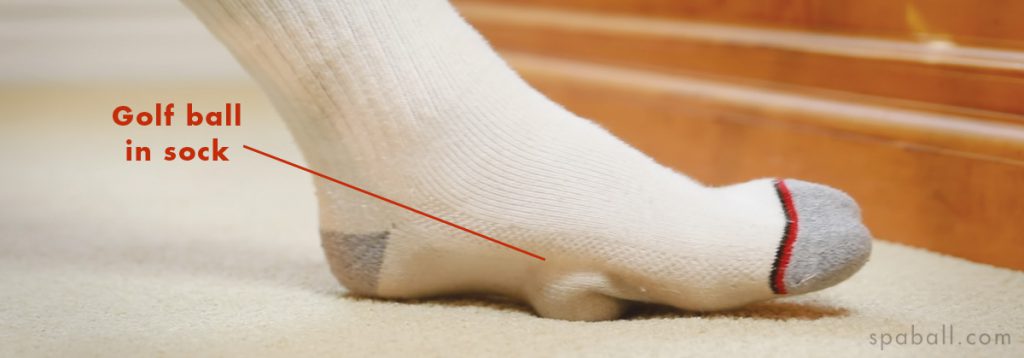 A fantastic way to revitalize your feet is to roll a golf ball under the arch of your foot against the floor. This is a bit challenging to do on a plane, so put the ball in your sock so it doesn’t roll away. Just remember to take it out of your sock before you stand up.
A fantastic way to revitalize your feet is to roll a golf ball under the arch of your foot against the floor. This is a bit challenging to do on a plane, so put the ball in your sock so it doesn’t roll away. Just remember to take it out of your sock before you stand up.
Flying doesn’t have to be a sentence for physical torture if you bring along a couple of self-care devices. Consider them your TSA-approved secret weapons and enjoy your flight.
